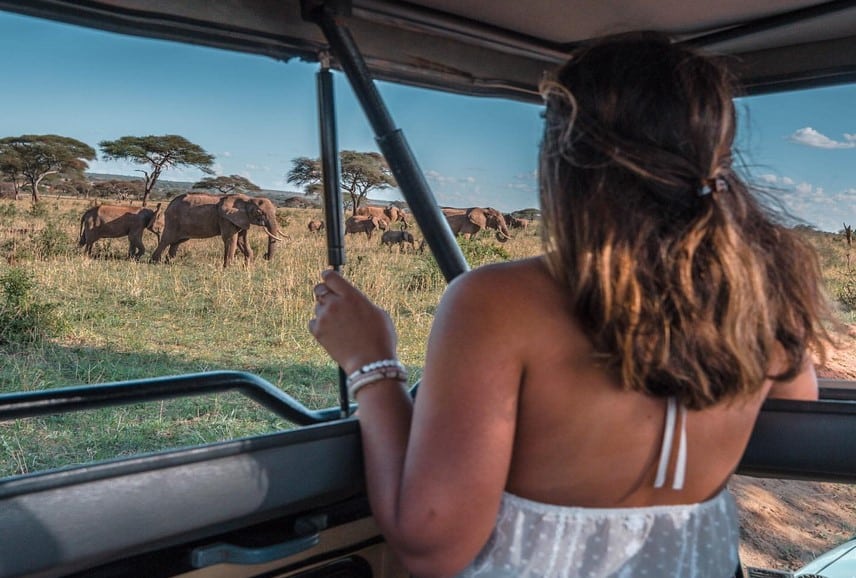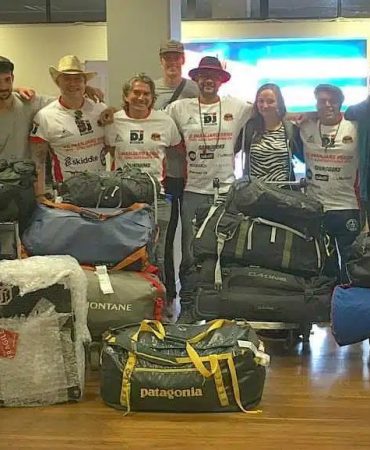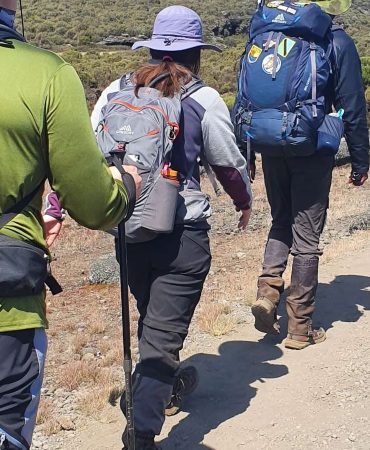Tour East Africa: Explore the top 7 thrilling safari tours in East Africa. Discover wildlife and stunning landscapes with these must-do experiences in Tanzania and beyond.



Introduction to East Africa Safari Tours
Embarking on a safari tour in East Africa is an adventure of a lifetime, offering travelers the chance to witness some of the most spectacular wildlife and landscapes on the planet. Spanning several countries, East Africa is renowned for its rich biodiversity, with Tanzania standing out as a premier destination for safari enthusiasts. Whether you’re a seasoned traveler or a first-time visitor, an East Africa safari, especially in Tanzania, promises unforgettable encounters with nature.
East Africa, home to iconic wildlife reserves and national parks, is the ultimate destination for safari-goers. Tanzania, in particular, is a jewel in the crown of East African safaris, offering diverse ecosystems, abundant wildlife, and breathtaking scenery. From the vast plains of the Serengeti to the towering peak of Mount Kilimanjaro, Tanzania offers a safari experience that is unmatched.
2. Why Choose Tanzania for an East Africa Safari
Tanzania’s Unique Wildlife Diversity
Tanzania is renowned for its unparalleled wildlife diversity, making it a top choice for safaris in East Africa. The country is home to a wide range of animals, including the famous Big Five—lion, leopard, elephant, buffalo, and rhino—as well as numerous other species such as cheetahs, giraffes, zebras, and wildebeests. Tanzania’s national parks and reserves provide a safe haven for these animals, offering visitors a chance to observe them in their natural habitats.
The Big Five and Beyond: Tanzania’s Wildlife
The Big Five are undoubtedly the stars of any Tanzania safari, but the country offers much more beyond these iconic species. Tanzania’s wildlife includes over 430 species of birds, making it a birdwatcher’s paradise. The country’s diverse habitats, from savannas and forests to wetlands and mountains, support a wide array of fauna, ensuring that every safari is rich with wildlife encounters.
Tanzania’s Landscape: From Serengeti to Kilimanjaro
Tanzania’s landscapes are as diverse as its wildlife. The Serengeti National Park, with its endless plains, is perhaps the most famous, known for the annual Great Migration where millions of wildebeests, zebras, and gazelles move in search of greener pastures. Mount Kilimanjaro, Africa’s highest peak, offers a dramatic backdrop to the country’s northern circuit. The Ngorongoro Crater, a UNESCO World Heritage Site, is another must-see, often described as a natural wonder due to its stunning beauty and the density of wildlife within its caldera.
3. Major Safari Parks and Reserves in Tanzania
Serengeti National Park
The Serengeti is Tanzania’s most famous national park and a key destination on any East Africa safari tour. It is globally recognized for the Great Migration, where over 1.5 million wildebeest and hundreds of thousands of zebras and gazelles make their way across the plains in one of the most spectacular wildlife events on earth. The park’s vast open landscapes also provide the perfect stage for witnessing predators like lions, cheetahs, and hyenas in action.
Ngorongoro Crater: A World Heritage Site
Ngorongoro Crater, often referred to as the “Eighth Wonder of the World,” is a must-visit for anyone traveling to Tanzania. This massive volcanic caldera is home to a dense concentration of wildlife, including the Big Five. The crater’s unique ecosystem supports a variety of species, and its stunning landscape, with lush forests and a large central lake, adds to its appeal.
Tarangire National Park
Tarangire National Park is famous for its large elephant herds and ancient baobab trees. Located in northern Tanzania, it is less crowded than some of the other parks, providing a more intimate safari experience. The park is also known for its birdlife, with more than 550 species recorded. During the dry season, the Tarangire River becomes a vital water source, attracting a wide variety of animals.
Lake Manyara National Park
Lake Manyara National Park is a smaller park that packs a punch with its diverse habitats, from groundwater forests to acacia woodlands and the vast soda lake itself. The park is famous for its tree-climbing lions, flamingos that flock to the lake, and large elephant populations. It offers a different perspective on Tanzanian wildlife and is a perfect stop on the way to the Serengeti.
Selous Game Reserve
The Selous Game Reserve, one of the largest faunal reserves of the world, offers a wild and remote safari experience in southern Tanzania. Less frequented by tourists, Selous is a UNESCO World Heritage Site known for its rich biodiversity. The Rufiji River that runs through the reserve is a lifeline, attracting hippos, crocodiles, and a variety of bird species, making boat safaris a popular activity here.
4. Best Time to Visit Tanzania for a Safari
Understanding Tanzania’s Climate
Tanzania’s climate varies depending on the region, but generally, it experiences two rainy seasons: the long rains from March to May and the short rains in November and December. The dry season, from June to October, is considered the best time for safaris as the weather is cooler, and wildlife congregates around water sources, making it easier to spot animals.
The Great Migration: A Seasonal Phenomenon
The Great Migration is a year-round event, but the best time to witness it in Tanzania is during the dry season, particularly from July to October when the wildebeest cross the Grumeti and Mara rivers. This period offers spectacular sightings as large herds navigate predator-filled waters. From January to March, the southern Serengeti also becomes a key area as it is calving season, attracting predators and providing dramatic wildlife interactions.
Off-Peak vs. Peak Season Safaris
While the dry season is the most popular time for safaris, visiting during the off-peak season has its advantages. The landscapes are lush and green after the rains, and there are fewer tourists, offering a more peaceful experience. Prices for accommodation and tours are also generally lower during this time, making it an attractive option for budget travelers.
5. Types of Safaris in Tanzania
Classic Game Drive Safaris
Game drives are the most common type of safari in Tanzania. These typically involve exploring national parks and reserves in 4×4 vehicles, guided by experienced rangers who know where to find the best wildlife sightings. Game drives can be done in the early morning, late afternoon, or even at night for a different experience.
Walking Safaris: Up-Close with Nature
Walking safaris offer a unique perspective, allowing you to explore the bush on foot accompanied by a professional guide and ranger. These safaris are perfect for those looking to connect with nature and learn about the smaller details of the ecosystem, such as plants, insects, and animal tracks. It’s a thrilling experience to be on the ground, following in the footsteps of wildlife.
Balloon Safaris: A Bird’s Eye View of the Wilderness
For a truly unforgettable experience, a balloon safari over the Serengeti or Tarangire National Park is a must. Floating above the plains at sunrise provides a unique vantage point to observe the landscape and wildlife. This serene experience offers a different perspective and the opportunity to capture stunning aerial photographs.
Photographic Safaris: Capturing the Wild
Tanzania is a paradise for photographers, both amateur and professional. Photographic safaris are tailored to ensure you get the best shots, often led by guides who understand the needs of photographers. Special vehicles equipped for photography, with extra space and adjustable seats, allow for capturing that perfect shot.
Luxury vs. Budget Safaris
Tanzania caters to all types of travelers, from luxury seekers to budget-conscious adventurers. Luxury safaris offer high-end lodges, private game drives, and gourmet dining, while budget safaris provide more affordable options like camping and shared vehicles. Both offer incredible wildlife experiences, but the level of comfort and exclusivity will vary.
6. The Great Migration: A Highlight of Tanzania Safaris
What is the Great Migration?
The Great Migration is one of the most remarkable wildlife spectacles in the world, involving the annual movement of millions of wildebeest, zebras, and gazelles across the Serengeti and into Kenya’s Maasai Mara. This natural phenomenon is driven by the search for fresh grazing lands and water, making it a circular journey that covers over 1,800 miles.
The Wildebeest Migration Cycle
The migration follows a continuous cycle throughout the year, starting in the southern Serengeti where calving occurs from January to March. The herds then move northward, crossing the Grumeti River around June, and eventually crossing into the Maasai Mara by July or August. By October, they begin their return journey, following the rains back to the Serengeti.
Best Places to Witness the Great Migration in Tanzania
To witness the Great Migration, timing and location are crucial. The central and northern Serengeti are prime spots during the dry season, especially around the Grumeti and Mara rivers. The Ndutu region in the southern Serengeti is the place to be during the calving season, offering sightings of newborns and the predators that hunt them.
7. Cultural Experiences in Tanzania Safari Tours
Visiting the Maasai Villages
A visit to a Maasai village offers an enriching cultural experience, allowing you to learn about the traditions and way of life of one of East Africa’s most iconic tribes. The Maasai people are known for their distinctive dress, beadwork, and warrior culture. Participating in a village tour gives insight into their daily lives, rituals, and survival techniques in the wild.
Understanding the Local Tribes and Traditions
Tanzania is home to over 120 ethnic groups, each with its own customs and traditions. While the Maasai are the most well-known, other tribes such as the Hadzabe, a hunter-gatherer group, and the Chaga of Kilimanjaro also offer unique cultural experiences. Exploring these communities adds depth to your safari, highlighting the human diversity of Tanzania.
Combining Cultural and Wildlife Tours
For a more holistic experience, many safari tours combine cultural visits with wildlife viewing. These combined tours allow travelers to connect with local communities and understand the cultural significance of the landscapes and animals they are observing. It’s an excellent way to enrich your safari experience and gain a broader perspective of Tanzania.
8. Planning Your Tanzania Safari
Choosing the Right Safari Tour Operator
Selecting a reputable safari tour operator is crucial to ensuring a safe and enjoyable experience. Look for operators with good reviews, knowledgeable guides, and a commitment to sustainable tourism. It’s also important to choose a company that offers the type of safari you’re interested in, whether it’s a luxury tour, a budget adventure, or a specialized photographic safari.
Essential Travel Documents and Vaccinations
Before traveling to Tanzania, ensure that your passport is valid for at least six months beyond your intended stay and that you have the necessary visas. Additionally, vaccinations for yellow fever, hepatitis, typhoid, and tetanus are recommended. It’s also advisable to take malaria prophylaxis and consult your doctor for personalized health advice.
Packing List: What to Bring for a Safari
Packing for a safari requires careful planning. Essentials include lightweight, neutral-colored clothing to blend into the environment, a wide-brimmed hat, sunscreen, insect repellent, binoculars, a good camera, and comfortable walking shoes. Layering is key as temperatures can vary widely from morning to evening. Don’t forget to pack any necessary medications and travel insurance details.
9. Accommodation Options in Tanzania Safaris
Luxury Safari Lodges and Camps
Tanzania is home to some of the most luxurious safari lodges and camps in Africa, offering top-notch amenities, gourmet cuisine, and exceptional service. These accommodations are often located in prime wildlife areas, allowing for exclusive game viewing experiences. Private decks, plunge pools, and spa services are common features in luxury lodges.
Budget and Mid-range Lodging
For travelers on a budget, Tanzania offers a range of mid-range and budget accommodations, including guesthouses, tented camps, and basic lodges. These options provide comfortable lodging with fewer frills but still offer access to incredible wildlife experiences. Budget campsites within national parks are particularly popular among backpackers and those seeking a more rustic adventure.
Mobile Tented Camps: A Nomadic Experience
Mobile tented camps are a unique option for those who want to follow the migration or experience different parts of the Serengeti. These camps move throughout the year, setting up in strategic locations to offer the best wildlife viewing opportunities. Staying in a mobile camp provides a closer connection to nature and the feeling of being on a true adventure.
Eco-Friendly Safari Camps
As sustainable tourism becomes more important, many safari operators are offering eco-friendly camps that minimize environmental impact. These camps use solar power, recycle waste, and often support local communities. Staying in an eco-friendly camp allows you to enjoy your safari while contributing to the conservation of Tanzania’s natural resources.
10. Tanzania Safari Itineraries
Classic 7-Day Tanzania Safari Itinerary
A 7-day safari is ideal for first-time visitors, offering a well-rounded experience of Tanzania’s top parks. Typically, the itinerary includes the Serengeti, Ngorongoro Crater, and either Lake Manyara or Tarangire National Park. This itinerary provides a good balance of wildlife viewing and cultural experiences, with enough time to see the Big Five and other key species.
Extended 10-14 Day Safari Tours
For those with more time, a 10-14 day safari allows for a deeper exploration of Tanzania’s parks and even the addition of a beach stay in Zanzibar. This itinerary might include southern parks like Selous and Ruaha, offering a more varied experience with fewer tourists. It’s perfect for wildlife enthusiasts who want to maximize their time in nature.
Family-Friendly Safari Itineraries
Family safaris are designed to be fun and educational, with itineraries that include shorter travel times, child-friendly accommodations, and activities like nature walks and cultural visits. These safaris often include interactive experiences that engage children, making the trip enjoyable for the whole family.
Honeymoon and Romantic Safaris
Tanzania is a popular destination for honeymooners, offering romantic safari experiences in secluded lodges with breathtaking views. Honeymoon itineraries often combine wildlife viewing with luxury, including private dinners, spa treatments, and even hot air balloon rides over the Serengeti. These safaris are designed to create lasting memories for couples.
11. The Cost of a Tanzania Safari
Factors Influencing Safari Costs
The cost of a Tanzania safari can vary widely depending on several factors, including the time of year, the level of accommodation, and the type of safari. Luxury safaris with high-end lodges and private guides will cost significantly more than budget options. Additionally, peak season rates are higher due to increased demand.
Budgeting for a Safari: What to Expect
When planning your budget, consider the cost of flights, accommodation, park fees, and additional activities such as balloon safaris or cultural tours. It’s also important to budget for tips, which are customary for guides and lodge staff. A mid-range safari typically costs between $3000 and $5000 per person for a week, while luxury safaris can exceed $10,000.
Saving Tips for a Tanzania Safari
To save on costs, consider traveling during the shoulder season, when prices are lower, and parks are less crowded. Group safaris are also more affordable than private tours, and opting for mid-range or budget accommodations can significantly reduce expenses. Booking well in advance or taking advantage of last-minute deals can also lead to savings.
12. Comparing Tanzania with Other East African Safari Destinations
Tanzania vs. Kenya: A Safari Comparison
Tanzania and Kenya are the two most popular safari destinations in East Africa, each offering unique experiences. While the Serengeti and Maasai Mara are part of the same ecosystem, Tanzania’s parks are generally larger and less crowded. Kenya is known for its well-established tourism infrastructure, making it a good choice for first-time visitors. However, Tanzania is often favored for its more remote and unspoiled landscapes.
Tanzania vs. Uganda: Gorilla Trekking and Safaris
While Tanzania is known for its savanna safaris, Uganda offers a different experience with gorilla trekking in the misty mountains of Bwindi. A safari in Uganda is typically combined with visits to its national parks like Queen Elizabeth and Murchison Falls, where you can see chimpanzees, lions, and elephants. A multi-country safari combining Tanzania and Uganda offers the best of both worlds.
Multi-Country Safari Tours: Exploring East Africa
For travelers looking to experience the diversity of East Africa, multi-country safaris are an excellent option. Combining Tanzania with Kenya, Uganda, or Rwanda allows for a broader range of experiences, from witnessing the Great Migration to trekking with gorillas. These tours often include seamless border crossings and coordinated logistics, making them convenient and comprehensive.
Unique Safaris Across East Africa
Beyond the classic game drives, East Africa offers unique safari experiences such as camel trekking in Kenya, exploring the remote landscapes of Ethiopia, or discovering the marine life off the coast of Tanzania and Mozambique. These unique safaris provide a different perspective and cater to travelers seeking adventure beyond the usual.
13. Sustainable Tourism and Conservation Efforts in Tanzania
Tanzania’s Conservation Initiatives
Tanzania has made significant strides in conservation, with efforts focused on protecting its rich biodiversity and promoting sustainable tourism. The establishment of national parks and game reserves has helped preserve wildlife habitats, and organizations like the Tanzania Wildlife Authority (TAWA) are actively involved in anti-poaching efforts and community conservation programs.
Community Involvement in Wildlife Conservation
Local communities play a crucial role in conservation efforts in Tanzania. Many lodges and tour operators work closely with communities, providing employment and supporting education and healthcare initiatives. By involving local people in tourism, there is a vested interest in protecting wildlife and natural resources, creating a sustainable model that benefits both the environment and the people.
Eco-Friendly Safaris: Reducing Your Footprint
Eco-friendly safaris are becoming increasingly popular in Tanzania, with many operators offering tours that minimize environmental impact. These safaris focus on reducing waste, conserving water, and using renewable energy sources. Travelers are encouraged to choose eco-friendly lodges, participate in carbon offset programs, and practice responsible tourism by respecting wildlife and local cultures.
14. Frequently Asked Questions (FAQs) About Tanzania Safari Tours
Is Tanzania Safe for Safari Tours?
Yes, Tanzania is generally considered safe for safari tours. The country has a well-established tourism infrastructure, and incidents involving tourists are rare. However, it’s important to follow the advice of your tour operator, respect local customs, and take basic precautions such as avoiding walking alone at night in urban areas.
What is the Best Time to Visit Tanzania?
The best time to visit Tanzania depends on what you want to see. The dry season from June to October is ideal for general wildlife viewing, while the wet season from November to May offers lush landscapes and fewer tourists. For the Great Migration, the peak months are July to October.
What Wildlife Can I Expect to See in Tanzania?
Tanzania is home to a diverse array of wildlife, including the Big Five (lion, leopard, elephant, buffalo, and rhino), as well as cheetahs, giraffes, zebras, wildebeests, hippos, crocodiles, and over 430 species of birds. Specific wildlife sightings can vary depending on the park and time of year.
How Much Does a Tanzania Safari Cost?
The cost of a Tanzania safari can range from a few thousand dollars for a budget tour to over $10,000 for a luxury experience. Factors affecting the cost include the duration of the safari, type of accommodation, and time of year. It’s advisable to research and budget accordingly.
How Do I Book a Tanzania Safari?
Booking a Tanzania safari can be done through a reputable tour operator or travel agency. It’s important to book well in advance, especially for peak season, and to ensure that the operator is licensed and experienced. Reading reviews and seeking recommendations can help in choosing the right operator.
Are Tanzania Safaris Family-Friendly?
Yes, Tanzania safaris can be very family-friendly, with many operators offering tailored itineraries for families. These often include shorter travel distances, child-friendly accommodations, and engaging activities for kids. It’s a great way for families to experience the wonders of the wild together.
15. Conclusion: Why Tanzania Should Be Your Next Safari Destination
Tanzania stands out as a premier safari destination in East Africa, offering unparalleled wildlife diversity, stunning landscapes, and rich cultural experiences. Whether you’re looking to witness the Great Migration, explore the remote wilderness, or connect with local tribes, Tanzania has something to offer every traveler. With careful planning and the right tour operator, your Tanzania safari will be an unforgettable adventure.




